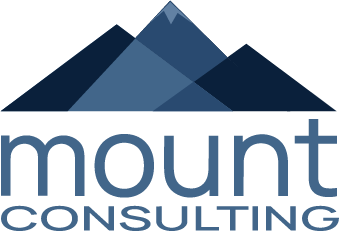DOMINIQUE VANDE LANGERIJT & JOOST JAN NOORDEGRAAF
Legacy in a rapidly modernizing world
WHY INSURANCE COMPANIES ARE EMBRACING DATA MANAGEMENT
While Solvency 2 was a big shake up earlier this decade, succeeding the Solvency I directive from 1973, the current material driver for change is IFRS17, and to a lesser extent IFRS9. Both Solvency 2 and IFRS17 have posed an increasing demand on implementing a more robust and effective data management platform. Especially life insurance companies still have a lot of legacy systems providing inputs in the finance and risk reporting processes. These inputs are assessed against requirements that are set with the ideas of big data, high performing and scalable cloud solutions, and endless possibilities of data usage and exchange. This is where “the dot on the horizon” meets a, sometimes, legacy reality.
The insurance industry has been consolidating for decades now. This consolidation was primarily legal and operational process driven, while there was less urgency to also consolidate the underlying data platforms. Now, with an increasing demand and focus on more granular data and closer alignment of liabilities valuation between finance and risk, it becomes apparent that also the underlying data must be more consistent and easier to reconcile, or even better, reconciled by design. Many insurance companies are therefore implementing a common finance and risk data environment, which is a very cumbersome and complex task. But not only do they have to consolidate their data, also the approach to data usage is subject to change. Where actuaries and finance people are used to report positions and explain movements “after the fact”, IFRS Movement analysis and Solvency 2 OCG reporting require the build of a dataset which already has the explanations captured in the transactions and journals. Since neither actuaries nor finance people are trained to build data models, and data modelers are not equipped to sufficiently understand new regulations, this paradigm change is adding additional challenges to design and implementation.
Add to this the management drive for increased efficiency, standardization, speed and accurateness and you will understand that many insurance companies struggle the get this right. On top of that, the insurance industry, unlike banks, do not have a BCBS239-like standard enforced by external regulators. This might still come in the future, but more than 7 years after its initial publication, we only see a slow and partial adoption as part of other regulations.
CAN THIS BE ACHIEVED?
We are convinced that it is possible, with a strong vision, commitment from the organization and execution power to make this happen. So where to start? First of all, think before you act. Think about the role of the finance and risk platform in your business processes, the benefits it brings to the organization and achieving strategic goals, and at what cost. Think about the people that should have a stake in this and how to engage them and keep them engaged. Think about your brightest minds in your company to make this happen and the right governance to bring and bind the team together.
The obvious follow-up is then where and how to start. The success of any data and data integration project lays in its foundation and architecture.
FOUNDATION
One foundation is the infrastructure that should be able to facilitate efficient data processing and data integration. The other foundation is the data management process and data governance. Modern infrastructure is widely available in the market and standards like cloud infrastructure have removed such limiting factors as scalability and performance.
Data management processes and data governance require more effort as they need to be tailored to the company, dealing with topics such as assigning data ownership, aligning data definitions, ensuring data quality, setting data retention rules, etc., providing the boundaries of the data operating model.
ARCHITECTURE
A good architecture consists of identifying and designing business and data processes and the supporting IT solutions to effectively integrate the finance and risk data platform in the business processes. This has many angles such as the operating model, end-2-end reporting processes, data transfer processes and logical data model(s). This can then be gradually implemented, no one wants to wait for years to see the first benefits of such an endeavor.
This is where the real challenge starts and where legacy systems, processes and thought patterns need to be changed towards a modern view on aligned and integrated risk, finance and reporting. This is built up from a vision, anchored in the foundation and architecture and executed by a multi-disciplinary team that combines business knowledge with data integration and modelling expertise. Sometimes people enjoy the journey more than the result. This journey will be on rocky roads, but the result, if done properly, will hugely benefit your organization in terms of operational efficiency and data reliability in the finance and risk domain. Imagine what you could do with consistent, reconciled (by design!) and up-to-date data, shared between finance and risk!
Want to know more?
We like to talk about our business and how we can help you!
